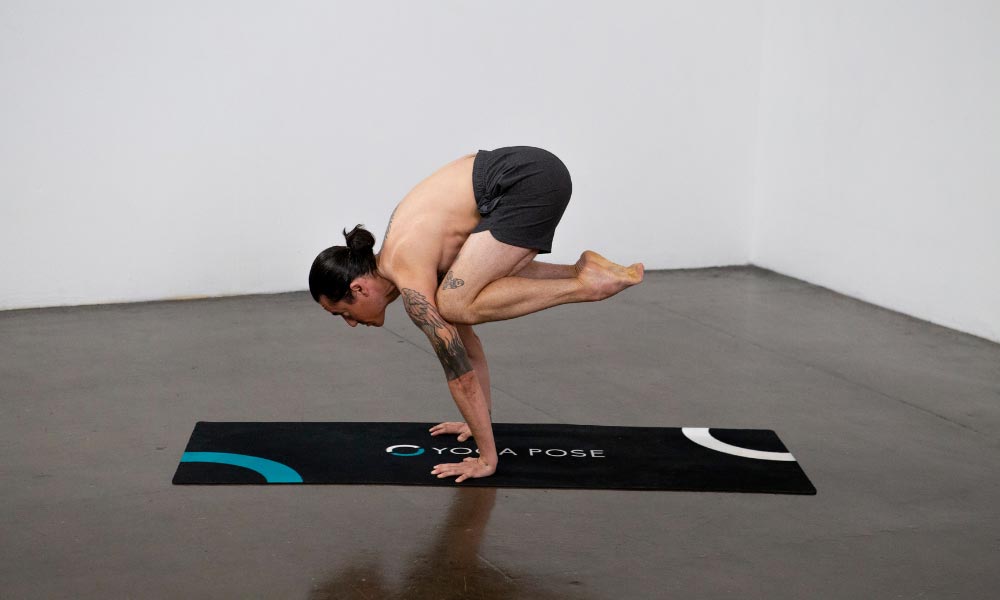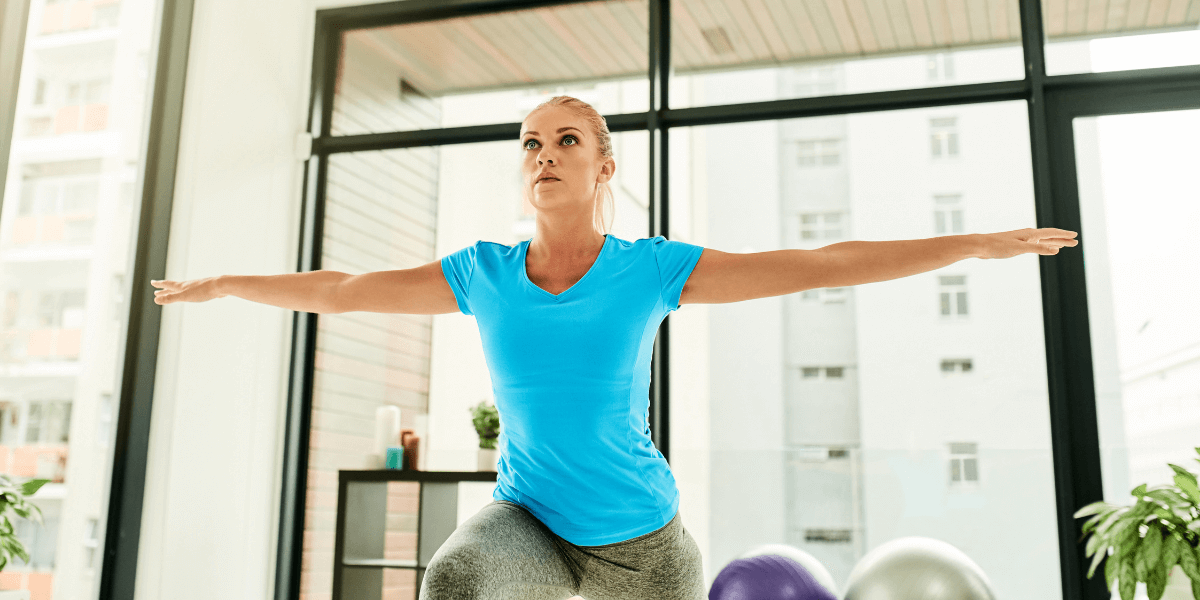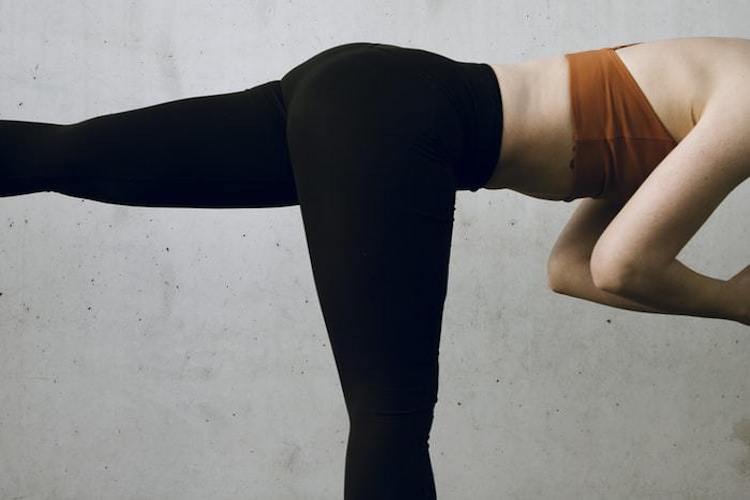Crane pose, or Bakasana, offers a wide range of benefits for your body, including stronger core, arms, shoulders, improved hand-body coordination, and a stronger connection to the mind and spirit. It also improves balance and brings more awareness to your body. Another big benefit is mental focus and concentration.
While Crane pose is a more advanced pose, you can build up to this asana over time and with a few yogi tips. We’ve compiled a list of 10 tips to help improve your Crane pose.
1. Eliminate Your Fear of Falling
Crane pose requires you to keep your arms straight, knees tightly wedged in the armpits, and hips high. Crow pose, or Kakasana, is this pose’s sister pose, and a modified version that requires you to keep your arms bent. Begin by mastering the Crane pose. You must then breathe throughout your body and eliminate the fear of falling forward as you straighten your arms.
2. Strengthen Your Core Muscles
It is crucial to build your core muscles and focus on having a strong foundation that supports you in Crane pose. Having a strong core will allow you to raise your hips higher and reduce the weight on your wrist. We recommend trying poses like Boat pose and Plank pose to build your core.
3. Strengthen Your Shoulders, Arms & Wrists
Your shoulders, arms, and hands are important in Crane pose because they support your body weight. Without strong arms and wrists, you will find it difficult to stay upright and hold the position. You can build strength in your arms and shoulders by practicing the Warrior series. Both Warrior I and Warrior II require that you hold your arms up for a set amount of time. Surprisingly, Child’s pose strengthens your wrists by connecting your rotator cuffs with your wrists.
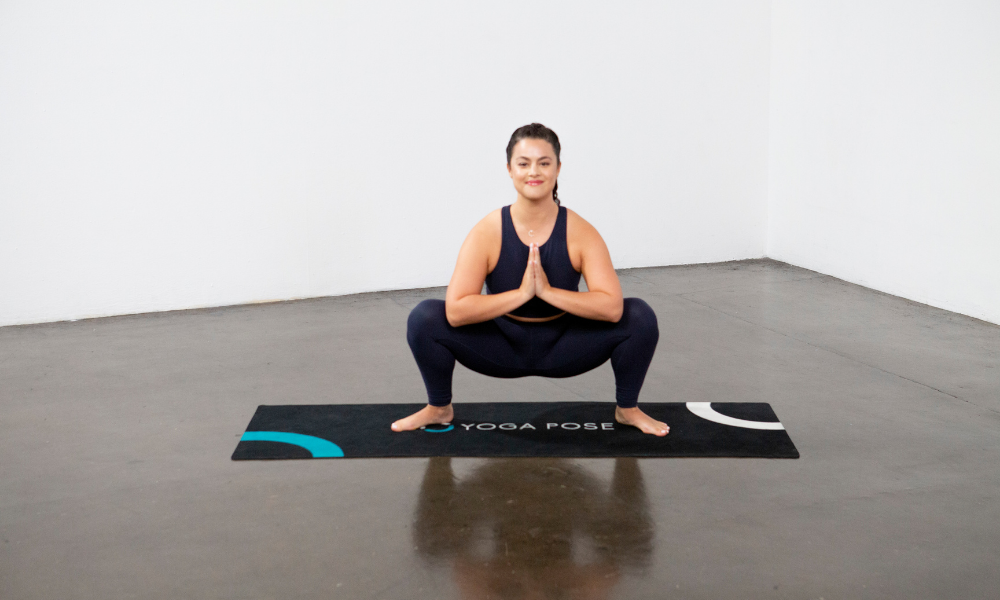
4. Master Garland Pose
Garland pose, or Malasana, is an essential prep pose that strengthens your gluteal muscles and allows for a deep stretch at the hips. Tight hips in Crane pose will make it difficult for you to raise your legs and get them in the correct position, behind the arms. Mindful attention, core strength, and flexible hips will help you hold your legs in place and stay in Crane pose.
5. Use a Block While Tipping Forward
Start Crane pose by placing a block in front of you to rest your head, and then lift one foot at a time. Regular practice will lead to lifting your head off the block and using your core and arm strength for full support.
6. Be Mindful of Your Movement
Mindful movement is one of the most important factors in Crane pose. This advanced pose requires a focus on balancing your entire body. Concentration and slow, purposeful movements will allow you to achieve the pose and navigate the balancing act that is Crane.
7. Keep Your Hips Elevated
To keep your hips elevated, focus on your core and press into your arms and hands. This will give you a solid base to lean into for support. Consciously think about elevating your feet up off the floor and envision a strong core as you lean into your arms.
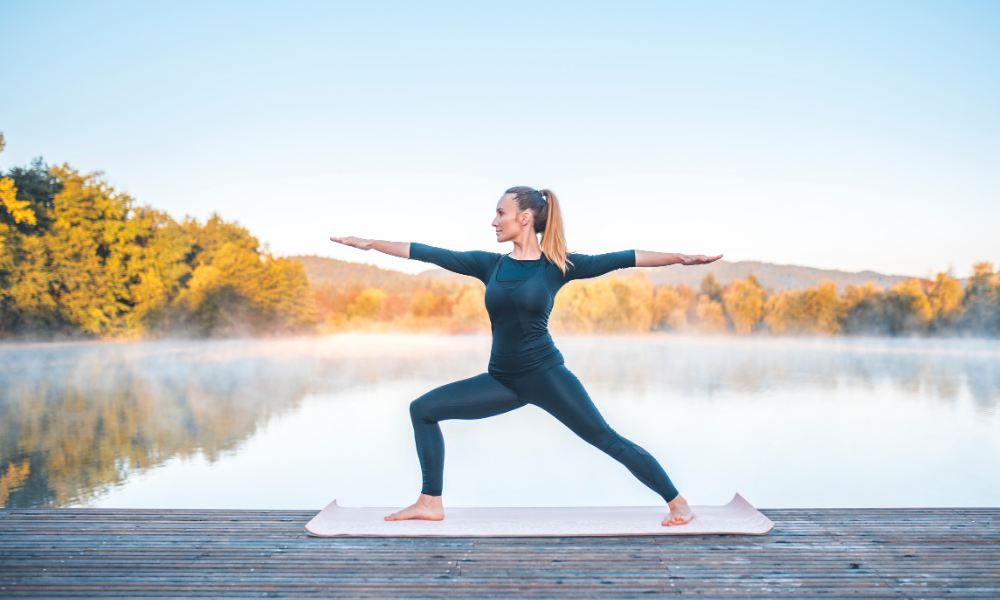
8. Utilize your Adductors in Full Capacity
The adductors draw your legs into the body’s midline because they run along the inner thighs. They are a muscle group that play a key role in lower body stabilization, and they are pivotal as you lift your legs off the floor in Crane pose. Strengthen your adductors in prep poses like Warrior II and Eagle pose.
9. Counterbalance Your Body Weight
Like the Warrior III pose, Crane pose focuses on the counterbalance of body weight, especially between your upper and lower halves. Countering and lengthening your body in opposite directions can help stabilize strength and balance in your arms and legs. Focus on slow adjustments and movements rather than jumping or springing your body into position. Jumping movements like this will negate any balance, instead of leaning into your bodyweight and find the right tipping point. Practice makes perfect.
10. Round Your Back
Instead of keeping a straight back, round your back to activate your core and make it easier to lift your legs. Rounding your back is a critical aspect of Crane pose, which is often ignored by practitioners, however, it will make it easier to activate your core and lift up off your mat.
Final Words
While Bakasana is a more advanced yoga pose, working up to Crane is a goal for many yogis. Remember that you can practice preparatory poses that strengthen the muscle groups necessary for this asana. Also, consider using blocks and other props to help you when easing into the pose.
